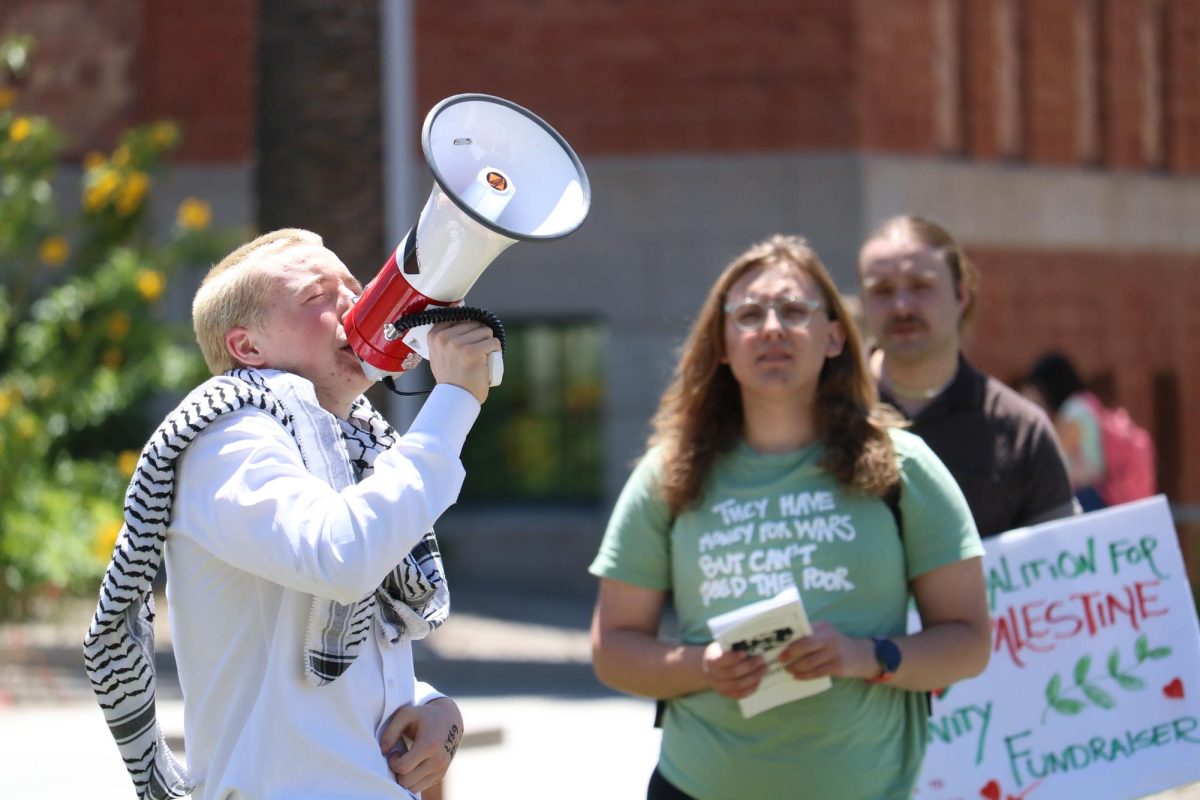Higher education has to do “”more with less,”” according to Arizona Board of Regents President Ernest Calderón.
Calderón spoke at the Higher Education Colloquium on Thursday to discuss how higher education in Arizona will need to increase the number of graduates with less money.
“”You generations who are here are the first generations in America whose children will earn less than you are. You are the first generations in American history whose children will be less educated than you are,”” Calderón said. “”We are at a crossroads in education.””
One strategy Calderón suggested was differentiated funding, which would mean campuses with high access, as in more accessible to more people, would have the lowest tuition, research campuses would have slightly higher tuition and the campuses that receive the most money for research would have the highest tuition.
By 2020, Calderón would like to have at least one regional university in every Arizona county.
Calderón said he has recommended a three-plus-one program.
This program would mean that a student’s first two years would be at a community college. The third year would still be at a community college, but it would be UA’s curriculum. The UA would determine if an instructor at the community college was qualified to teach UA curriculum. If the community college did not have an instructor that met UA’s qualifications, the community college would have to hire a UA instructor.
“”We say congratulations, you’re admitted as a student of University of Arizona, but your first three years at the University of Arizona will be at Pima Community College or Mesa Community College, or wherever the need was to fill those places,”” Calderón said.
The UA views the program as offering a degree program that is more adaptable to students’ needs.
“”The increased flexibility for time-bound and place-bound students arises from the fact that students can complete a larger percentage of their degree at the community college,”” said Michael Proctor, the UA vice provost for Outreach and Global Initiatives. “”And perhaps save additional money by paying lower tuition for a larger number of credits and not having to move to the university (or to Tucson) until later in their academic career.””
Some thought the proposed strategies were flawed.
“”Your plans suggest a lot of increased differentiation and expansion of access without a lot of new investment. To me that suggests that quality is going to drop, perhaps, and retention may suffer as a result,”” said Brendan Cantwell, a UA postdoctoral research associate. “”So how do you intend to increase degree completion rates along with expanding access?””
“”Let me ask you this question in response: How are we going to get that investment?”” Calderón said.
According to Calderón, it is likely that some of the three-plus-one program will be in effect by this fall, and Northern Arizona University will most likely to be the first to implement the plan.
In order for the program to take effect at the UA, President Robert Shelton has to present it to the Board of Regents, which in turn has to approve the program.
Calderón said the challenges that higher education faces are not insurmountable.
“”Don’t lose heart,”” he said. “”Don’t lose hope you need to continue to fight for it,””








